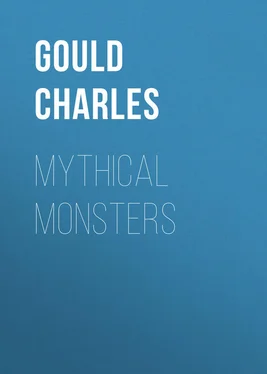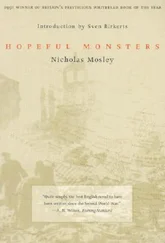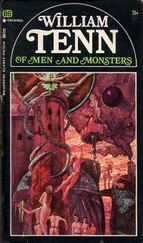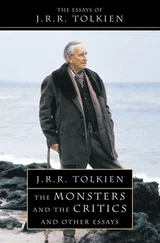Charles Gould - Mythical Monsters
Здесь есть возможность читать онлайн «Charles Gould - Mythical Monsters» — ознакомительный отрывок электронной книги совершенно бесплатно, а после прочтения отрывка купить полную версию. В некоторых случаях можно слушать аудио, скачать через торрент в формате fb2 и присутствует краткое содержание. Жанр: Мифы. Легенды. Эпос, Природа и животные, foreign_antique, foreign_prose, на английском языке. Описание произведения, (предисловие) а так же отзывы посетителей доступны на портале библиотеки ЛибКат.
- Название:Mythical Monsters
- Автор:
- Жанр:
- Год:неизвестен
- ISBN:нет данных
- Рейтинг книги:5 / 5. Голосов: 1
-
Избранное:Добавить в избранное
- Отзывы:
-
Ваша оценка:
- 100
- 1
- 2
- 3
- 4
- 5
Mythical Monsters: краткое содержание, описание и аннотация
Предлагаем к чтению аннотацию, описание, краткое содержание или предисловие (зависит от того, что написал сам автор книги «Mythical Monsters»). Если вы не нашли необходимую информацию о книге — напишите в комментариях, мы постараемся отыскать её.
Mythical Monsters — читать онлайн ознакомительный отрывок
Ниже представлен текст книги, разбитый по страницам. Система сохранения места последней прочитанной страницы, позволяет с удобством читать онлайн бесплатно книгу «Mythical Monsters», без необходимости каждый раз заново искать на чём Вы остановились. Поставьте закладку, и сможете в любой момент перейти на страницу, на которой закончили чтение.
Интервал:
Закладка:
11
Address delivered to the Biological Section of the British Association. Glasgow, 1876.
12
In 1854 a communication from the Torquay Natural History Society, confirming previous accounts by Mr. Goodwin Austen, Mr. Vivian, and the Rev. Mr. McEnery, “that worked flints occurred in Kents Hole with remains of extinct species,” was rejected as too improbable for publication.
13
“She is set down a thorough heretic, not at all to be believed, a manufacturer of unsound natural history, an inventor of false facts in science.” – Gosse, Romance of Nat. Hist. , 2nd Series, p. 227.
14
Pop. Sci. Monthly , No. 60, April 1877.
15
“By the kindness of my friend, Mr. Bartlett, I have been enabled to examine a most beautiful Japanese carving in ivory, said to be one hundred and fifty years old, and called by the Japanese net suke or togle . These togles are handed down from one generation to the next, and they record any remarkable event that happens to any member of a family. This carving is an inch and a half long, and about as big as a walnut. It represents a lady in a quasi-leaning attitude, and at first sight it is difficult to perceive what she is doing; but after a while the details come out magnificently. The unfortunate lady has been seized by an octopus when bathing – for the lady wears a bathing-dress. One extended arm of the octopus is in the act of coiling round the lady’s neck, and she is endeavouring to pull it off with her right hand; another arm of the sea-monster is entwined round the left wrist, while the hand is fiercely tearing at the mouth of the brute. The other arms of the octopus are twined round, grasping the lady’s body and waist – in fact, her position reminds one very much of Laocoon in the celebrated statue of the snakes seizing him and his two sons. The sucking discs of the octopus are carved exactly as they are in nature, and the colour of the body of the creature, together with the formidable aspect of the eye, are wonderfully represented. The face of this Japanese lady is most admirably done; it expresses the utmost terror and alarm, and possibly may be a portrait. So carefully is the carving executed that the lady’s white teeth can be seen between her lips. The hair is a perfect gem of work; it is jet black, extended down the back, and tied at the end in a knot; in fact, it is so well done that I can hardly bring myself to think that it is not real hair, fastened on in some most ingenious manner; but by examining it under a powerful magnifying glass I find it is not so – it is the result of extraordinary cleverness in carving. The back of the little white comb fixed into the thick of the black hair adds to the effect of this magnificent carving of the hair. I congratulate Mr. Bartlett on the acquisition of this most beautiful curiosity. There is an inscription in Japanese characters on the underneath part of the carving, and Mr. Bartlett and myself would, of course, only be too glad to get this translated.” – Frank Buckland, in Land and Water .
16
Max Müller, Science of Language , 4th edition, p. 163-165. London, 1864.
17
Science of Language , p. 168.
18
“When a naturalist, either by visiting such spots of earth as are still out of the way, or by his good fortune, finds a very queer plant or animal, he is forthwith accused of inventing his game, the word not being used in its old sense of discovery but in its modern of creation . As soon as the creature is found to sin against preconception, the great (mis?) guiding spirit, à priori by name, who furnishes philosophers with their omniscience pro re natâ , whispers that no such thing can be, and forthwith there is a charge of hoax. The heavens themselves have been charged with hoaxes. When Leverrier and Adams predicted a planet by calculation, it was gravely asserted in some quarters that the planet which had been calculated was not the planet but another which had clandestinely and improperly got into the neighbourhood of the true body. The disposition to suspect hoax is stronger than the disposition to hoax. Who was it that first announced that the classical writings of Greece and Rome were one huge hoax perpetrated by the monks in what the announcer would be as little or less inclined than Dr. Maitland to call the dark ages?” — Macmillan , 1860.
19
Poetic Epistles , Bk. iii., Ep. 3.
20
Rara avis in terris, nigroque simillima cygno.
21
“Having showed the foregoing description of the mountain cow, called by the Spaniards ante [ manatee ?], to a person of honour, he was pleased to send it to a learned person in Holland.” This learned person discusses it and compares it with the hippopotamus, and winds up by saying, in reference to a description of the habits of the hippopotamus, as noticed at Loango by Captain Rogers, to the effect that when they are in the water they will sink to the bottom, and then walk as on dry ground, “but what he says of her sinking to the bottom in deep rivers, and walking there, if he adds, what I think he supposes, that it rises again, and comes on the land, I much question; for that such a huge body should raise itself up again (though I know whales and great fish can do) transcends the faith of J. H.” – F. J. Knapton, Collection of Voyages , vol. ii., part ii. p. 13. 4 vols., London, 1729.
22
Historical Account of Discoveries and Travels in Asia. Hugh Murray, F.R.S.E., 3 vols. 8vo. Edinburgh, 1820.
23
Bk. x., chap. 53.
24
A writer in Macmillan’s Magazine in 1860 concludes a series of objections to the canal as follows: “And the Emperor must hesitate to identify himself with an operation which might not impossibly come to be designated by posterity as ‘Napoleon’s Folly.’”
25
The Bower Bird, Ptilonorhyncus holosericeus , and the Garden-building Bird of New Guinea, Amblyornis inornara .
26
Recherches, &c. des Mammiferes , plate 1. Paris, 1868 to 1874.
27
“This obstacle was a forest of oaks, not giant oaks, but the very reverse, a forest of dwarf oaks ( Quercus nana ). Far as the eye could reach extended the singular wood, in which no tree rose above thirty inches in height. Yet was it no thicket, no undergrowth of shrubs, but a true forest of oaks, each tree having its separate stem, its boughs, its lobed leaves, and its bunches of brown acorns.” – Capt. Mayne Reid, The War Trail , chap. lxiv.
28
Respecting the timber trees of this tract, Dr. Ferdinand von Mueller, the Government botanist, thus writes: – “At the desire of the writer of these pages, Mr. D. Bogle measured a fallen tree of Eucalyptus amygdalina , in the deep recesses of Dandenong, and obtained for it a length of 420 feet, with proportions of width, indicated in a design of a monumental structure placed in the exhibition; while Mr. G. Klein took the measurement of a Eucalyptus on the Black Spur, ten miles distant from Healesville, 480 feet high! In the State forest of Dandenong, it was found by actual measurement that an acre of ground contained twenty large trees of an apparent average height of about 350 feet.” – R. Brough Smyth, The Gold Fields of Victoria . Melbourne, 1869.
Читать дальшеИнтервал:
Закладка:
Похожие книги на «Mythical Monsters»
Представляем Вашему вниманию похожие книги на «Mythical Monsters» списком для выбора. Мы отобрали схожую по названию и смыслу литературу в надежде предоставить читателям больше вариантов отыскать новые, интересные, ещё непрочитанные произведения.
Обсуждение, отзывы о книге «Mythical Monsters» и просто собственные мнения читателей. Оставьте ваши комментарии, напишите, что Вы думаете о произведении, его смысле или главных героях. Укажите что конкретно понравилось, а что нет, и почему Вы так считаете.











